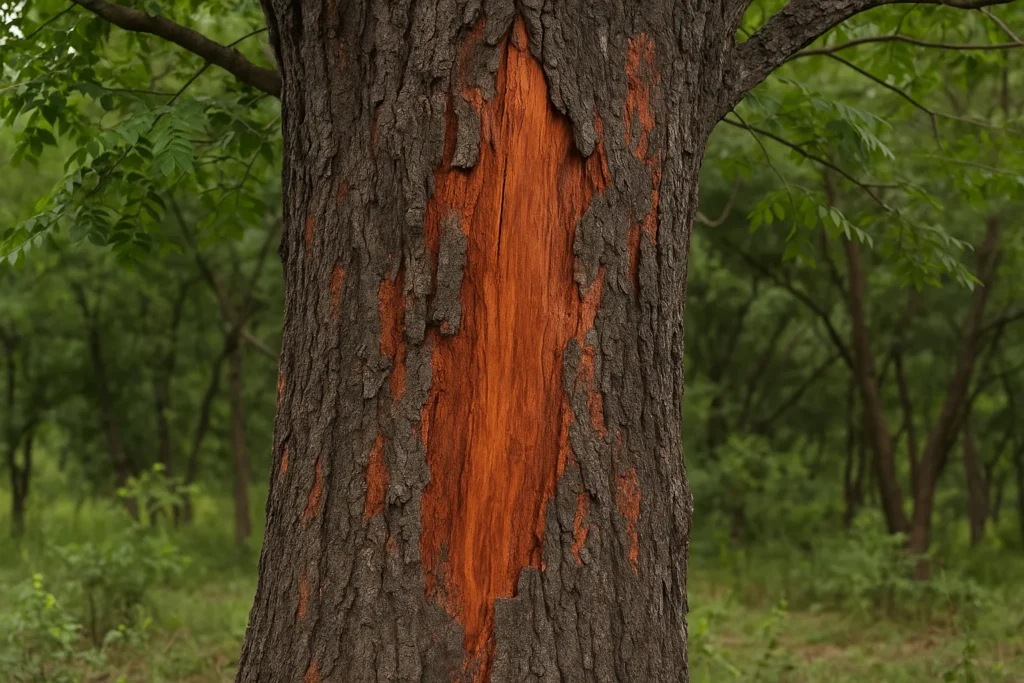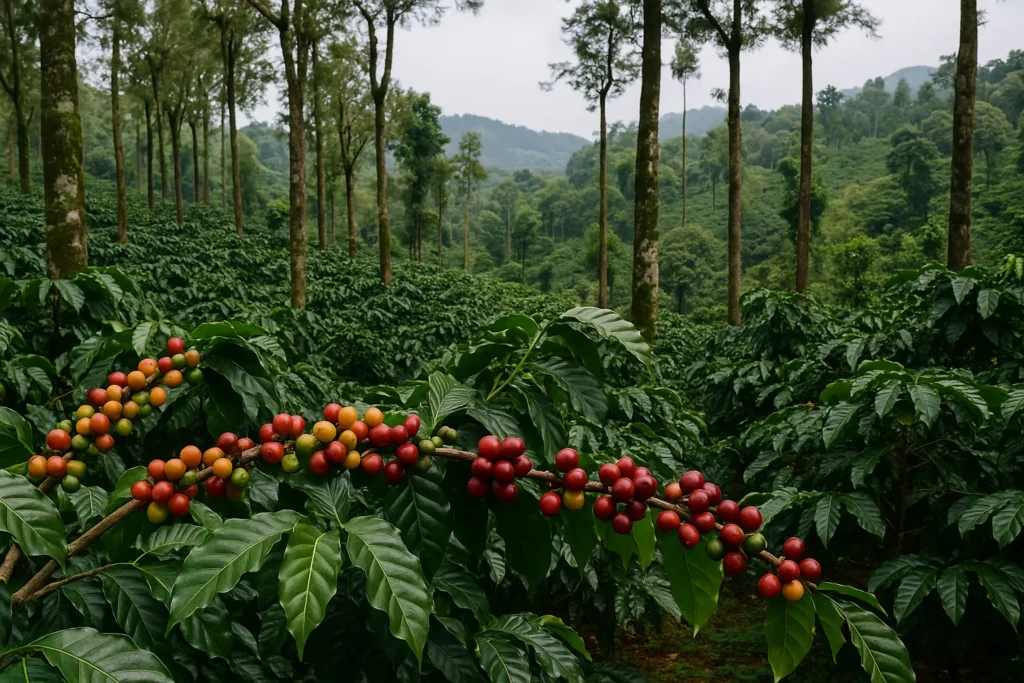Have you ever come across the term “Red Sandalwood” and wondered what makes it so special? Known for its rich color, medicinal properties, and historical value, red sandalwood is more than just a tree. It’s a cultural gem, an economic asset, and a botanical wonder. But where does red sandalwood grow? And how long does it take to become the tree we see in pictures or use in daily life?
In this guide, we’ll explore the origins of red sandalwood, its uses, growth time, and even how you can grow one yourself. Whether you’re a plant lover, a curious learner, or someone exploring herbal remedies, you’re in for an insightful read.
What is Red Sandalwood?
Let’s start with the basics before diving into where red sandalwood grows. Red sandalwood, also known as Pterocarpus santalinus, is a rare and highly valued tree species native to India. Unlike white sandalwood, which is known for its fragrance, red sandalwood is prized for its deep red heartwood used in furniture, medicine, cosmetics, and traditional rituals. It’s also called Rakta Chandan in many parts of India.
This tree has no scent, but its dense and richly colored wood makes it a popular choice in carvings and Ayurvedic preparations.
Where Does Red Sandalwood Grow?
Now to the heart of the topic, where red sandalwood found most commonly? Red sandalwood primarily grows in the southern parts of India, especially in the Eastern Ghats region of Andhra Pradesh. It’s a native species of this area and thrives in dry, hilly terrain with moderate rainfall and plenty of sunlight.
Some of the key areas where red sandalwood grows include:
- Seshachalam Hills
- Kadapa District
- Nellore
- Chittoor
- Kurnool
- Anantapur
Although its growth is concentrated in Andhra Pradesh, some plantations and conservation efforts have begun in Tamil Nadu and Karnataka as well.
Outside India, the climate and soil do not support red sandalwood’s natural growth, making it a rare and protected tree globally. In fact, exporting red sandalwood is regulated under CITES (Convention on International Trade in Endangered Species), emphasizing its rarity.
Red Sandalwood: How Many Years to Grow Fully?
You might be wondering; red sandalwood how many years to grow? Red sandalwood is not a fast-growing tree. It requires 20 to 25 years to mature fully. In some cases, especially in dry climates or poor soil, it may take up to 30 years for the heartwood to develop the rich red hue and density it’s known for.
The growth rate depends on several factors such as:
- Climate
- Soil type
- Rainfall
- Altitude
- Maintenance and protection from pests or illegal harvesting
Due to its long growth cycle and high value, red sandalwood is often grown under government-controlled or licensed projects. It is rarely found in private home gardens unless grown as part of a registered plantation.
Growing Red Sandalwood Tree at Home or Farm
Thinking about growing red sandalwood tree? Here’s what you should know before you start. While it’s a long-term commitment, growing red sandalwood is possible if you live in a dry, tropical climate. It prefers red soil or loamy soil with good drainage and low humidity. The tree doesn’t need much watering once it establishes itself but thrives in full sunlight.
Steps to grow red sandalwood plant:
- Start with Quality Red Sandalwood Seeds: Germination takes time and care. The seeds should be soaked in water for 24–48 hours before planting.
- Use a Well-Drained Potting Mix: Soil rich in phosphorus and moderately dry works best.
- Choose a Sunny Spot: The plant needs direct sunlight.
- Be Patient: The tree grows slowly. Initial years require care and protection.
- Watch Out for Pests: Regular checks can help avoid damage.
Growing red sandalwood at home is more about conservation than quick profit. If you’re considering it for commercial purposes, consult your local forestry department regarding permissions.
Red Sandalwood Uses You Should Know About

Ever wondered what is the use of red sandalwood in everyday life? This tree is packed with multiple benefits across industries.
Traditional and Modern Uses:
- Ayurvedic Medicine: Red sandalwood is used to treat skin conditions, inflammation, and even fever.
- Cosmetics: Its powder is a common ingredient in face packs for glowing skin.
- Furniture and Carving: The rich red color and durability make it ideal for luxury woodwork.
- Religious Use: Used in temples and for pooja rituals.
- Natural Dye: Its heartwood provides a natural red pigment used in textiles and painting.
Its versatility explains why it’s so highly valued, both culturally and economically.
Red Sandalwood Benefits: More Than Just Wood
So, aside from its material uses, red sandalwood benefits your health and skin too. Here’s what makes it special:
- Anti-inflammatory Properties: Helpful for treating acne and rashes.
- Cooling Effect: Often used in summer skin care routines.
- Blood Purification: In Ayurveda, it’s believed to help detoxify the blood.
- Antioxidant-Rich: Helps in reducing signs of aging and improving skin texture.
- No Side Effects (When Used Topically): Safe to apply externally for most skin types.
Keep in mind, internal consumption of red sandalwood should only be done under the guidance of an Ayurvedic expert.
Understanding Red Sandalwood Seeds and Plant Growth
Before you dive into cultivation, it’s important to understand the red sandalwood seeds and their characteristics.
- Seed Appearance: Oval and hard-shelled, light brown to reddish-brown in color.
- Germination Time: Usually 15–30 days under ideal conditions.
- Plant Traits: Hardy, drought-resistant once established, and can survive in poor soil.
- Leaf Type: Compound leaves with bright green leaflets.
- Height: Can grow up to 8–10 meters when mature.
The red sandalwood plant is not just a tree; it’s a symbol of patience, endurance, and long-term reward. Curious about more rare plants, their benefits, and how to grow them? NutBolt India is your go-to hub for answering every What, Why, Who, When, Where, and How you’ve ever wondered. Whether it’s understanding plant origins or exploring ancient traditions, you’ll always leave a little wiser.
Final Thoughts
Red sandalwood is more than just a valuable hardwood; it’s a story of nature, patience, and ancient wisdom. Now that you know where does red sandalwood grow, how long it takes, and what it’s used for, you’ll see it with a deeper appreciation.
Whether you’re planning to grow a red sandalwood plant or simply curious about its benefits, one thing is certain; it’s a tree worth knowing about. And who knows? Maybe your curiosity today could spark a conservationist’s passion tomorrow.


